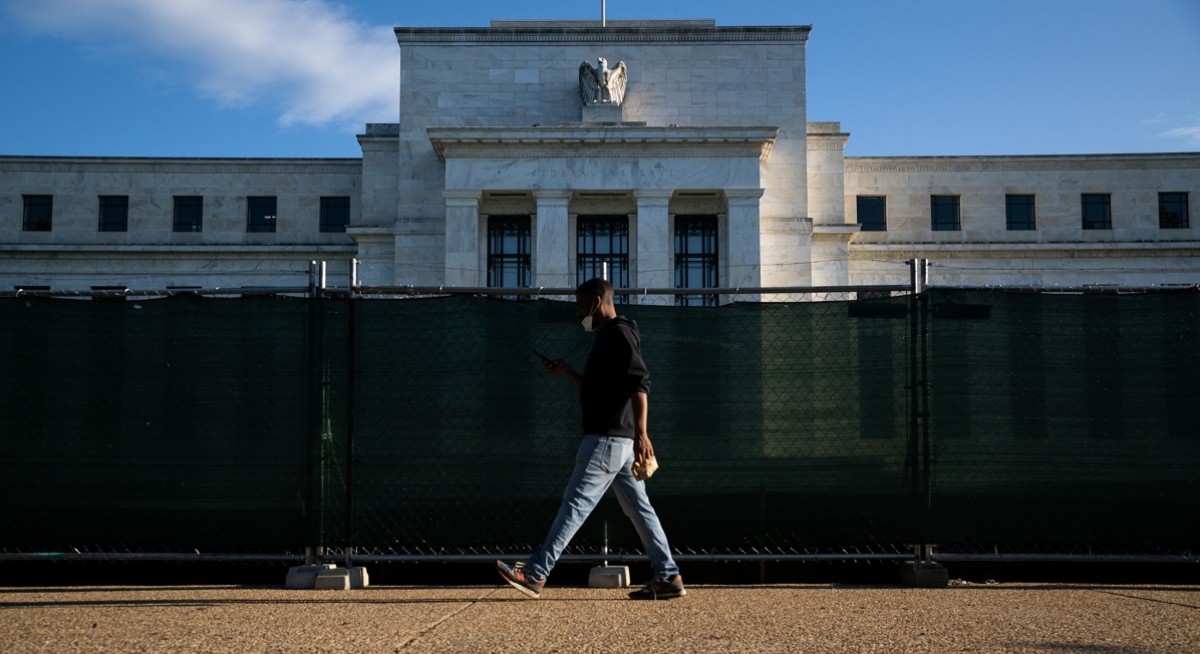When low interest rates are prolonged
A historical perspective illuminates some of the challenges that are likely to emerge as international financial conditions tighten. Real policy interest rates (nominal interest rates minus inflation) in the world’s financial centre, the US, have been consistently negative since the 2008–2009 global financial crisis.
Real interest rates have remained negative for multi-year periods in a global financial centre only four times since the mid-1800s (at least). The first three episodes were during the two world wars and in the aftermath of the OPEC oil shock from 1974–1980. In these three cases, average inflation in the US ranged from 7% to 15%, and the restoration of positive real interest rates was part of an effort to tackle inflation.
The current period of prolonged negative real interest rates is the longest of the four. Moreover, real rates in other advanced economies have been even more deeply negative. In much of Europe and Japan, nominal interest rates were also negative — a historical novelty.
See also: Former ANZ CEO Elliott sues Australian bank over bonus cuts
Yet another historically anomalous feature of the recent “low-for-long” interest-rate era is that, under the heading of quantitative easing (QE), advanced-economy central banks have purchased massive amounts of government (or government-guaranteed) debt, setting new peacetime records. While central-bank balance sheets shrank modestly after the global financial crisis ended, they remained far larger than they were before the crisis, and swelled to new highs during the Covid-19 pandemic.
This exceptional accommodation explains why, despite significant rate hikes, the US federal funds rate remains well below the 12-month inflation rate of about 8%. Likewise, the European Central Bank’s policy rate remains well below the US federal funds rate, while eurozone inflation nears double digits.
Against this backdrop, restoring positive real interest rates — thereby stabilising inflation — may require monetary policy to be kept tighter for longer than many policymakers and market participants seem to expect. Yet it is far from clear that central banks will maintain their commitment to tightening in the face of weakening economic activity. The persistence of inflation in the 1970s can be explained partly by the US Federal Reserve’s tendency to do too little too late or to waver in the tightening process.
See also: First Brands rushes to contain panic as loan plunges to 63 US cents
Volatility in fixed-income markets
Experience also points to another underappreciated risk: the return of volatility in fixed-income (bond) markets. The recent turmoil in the UK, which forced the Bank of England to launch an emergency bond-buying program, is a case in point.
Price volatility is standard in global commodity markets, regardless of the interest rate. But, in fixed-income markets, higher volatility is the handmaiden of higher and more unstable inflation rates. The variation in inflation rates across the major advanced economies was about seven times higher in 1974–1989 than in 2008–2021.
This means that, in the era of sustained ultra-low interest rates, fixed-income-market volatility declined steadily. Low and stable inflation rates across the advanced economies also contributed significantly to a reduction in exchange-rate volatility after 2008, as Kenneth Rogoff, Ethan Ilzetski, and I have shown.
Persistent ultra-low interest rates shaped balance sheets by encouraging private-sector and government borrowing and aggressive risk-taking in search of yield (increasing the likelihood of asset-price bubbles). While ultra-low rates technically strengthen government balance sheets, they may have created or aggravated off-balance-sheet losses, including by undermining pension-fund solvency (especially among local governments). “Low for long” has, in some cases, weakened fiscal discipline and delayed reforms.
For countries with very high debts (such as Italy), negative interest rates, together with massive debt purchases by central banks, may have replaced debt restructuring, which at least in principle can deliver faster and greater progress on debt reduction. It remains to be seen how that gap will be filled in an era of tighter monetary policy.
How will central banks respond?
Sink your teeth into in-depth insights from our contributors, and dive into financial and economic trends
The message is clear: the risks posed by the exit from sustained negative real interest rates extend well beyond recession. The question is how central banks will respond when those risks manifest.
Central-bank independence seems to have eroded — not necessarily de jure, but possibly de facto, as officials weigh the broader consequences of their actions. If leverage (public and private) and risk exposures raise doubts about financial stability, will central banks return to accommodation? What if fears of a market crash emerge, or sovereign insolvencies seem imminent (as might occur in the eurozone)? In the 1970s, economies endured years of high inflation before the exit from negative real interest rates was complete.
And yet more risks loom in 2023. China, a key engine of global economic growth after the last global financial crisis, is grappling with financial and political fragilities. Tighter global financial conditions could severely damage emerging-market and developing economies in the short run. Those with large US-dollar-denominated debts will suffer even more. Already, more than 60% of low-income countries are either at high risk of distress or already there.
But just as the exit from the “low-for-long” interest-rate era raises grave risks, so, too, does persistent high inflation, which, among other things, exacerbates inequality within and across countries. To say that this is a challenging time for governments and central banks would be a massive understatement.— © Project Syndicate
Carmen M Reinhart, a former chief economist of the World Bank Group, is Professor of the International Financial System at Harvard Kennedy School




